Posted: October 26th, 2012 | No Comments »
A black day for all those interested in preservation and heritage in Shanghai and a wake up call to all those who insist on telling me that the authorities are no longer tearing down important historical structures or are serious about preserving Chinese architecture in the city. The three storey wooden structure in Shanghai’s old town (Nanshi) was known locally as the House of Shen. It was built in 1860 by Shen Yisheng, a shipping merchant from Fujian Province. At the time of its construction it was far and away one of the largest and most luxurious properties in Shanghai. The Cultural Heritage Bureau of Huangpu apparently attempted to stop the demolition work after learning it was one of the city’s oldest homes – however, the power of the property developers dwarfed them and the building has gone to clear land for, guess what, a new luxury apartment high rise (because Shanghai needs another one!). Shamefully the (apparently misnamed) Cultural Heritage Bureau of Huangpu had not got around to listing the building as a heritage building (presumably as no minor meetings of the Communist Party ever took place there) and so nothing can be done to punish the property developer.
click here to see video footage of the house being destroyed
And here for a fuller history of the House of Shen wit pictures of the finer architectural details and motifs of the old structure
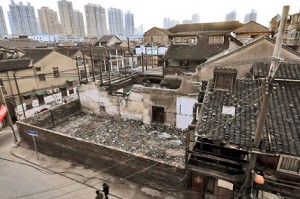 What was left of the House of Shen Compound shortly before destruction – architectural experts at Shanghai’s Tongji University claim it would have been a straightforward (if costly obviously) process to restore the property to its former glory.
What was left of the House of Shen Compound shortly before destruction – architectural experts at Shanghai’s Tongji University claim it would have been a straightforward (if costly obviously) process to restore the property to its former glory.
Posted: October 25th, 2012 | No Comments »
Amazon.co.uk are running their annual “Autumn Harvest” promotion in the UK from October 25th to November 7th and they’ve selected a range of books for GBP3.99 – a steal! – and Midnight in Peking is among the list. So, if you’ve been holding out (and shame on you!!) then now’s the time to get a bargain…
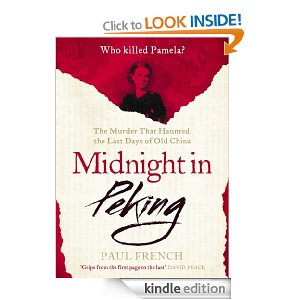
Posted: October 25th, 2012 | No Comments »
With Burma so front and centre in people’s minds in Asia at the moment I’ve posted occasionally on Burma-related things. Sarah Rooney’s 30 Heritage Buildings of Yangon (Rangoon) has been recommended to me and looks lush and lovely and the perfect little item for my coffee table right now…blurb and cover below as ever (and a link to the new Irrawaddy Literary Festival that deserves a plug too):
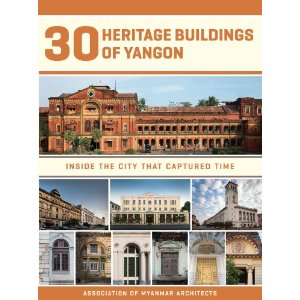
This book focuses on a selection of 30 key buildings and examines their past, present, and future. Piecing together the often forgotten social history of each building has involved delving into out-of-print books, company records, old city directories, newspaper archives, and people s memories. Published in both Burmese and English language editions, this book aims to contribute to the collective conversation about the social and economic potential of Yangon s colonial-era heritage in the hope that the city s architectural past can become a vibrant and sustainable part of its future. The modern history of Yangon can be traced through its colonial-era architecture. From the monumental former Reserve Bank of India, which records every step of the country s fiscal history, to the now derelict Pegu Club, which was once the favoured watering hole for officers of the British colonial government, each building has a story to tell. The buildings have survived war, natural disaster, and numerous changes of ownership. Many have been repurposed over the years. Today, the biggest threat to these buildings is neglect and lack of protection. In recent years they have become increasingly vulnerable. In 2005, when the government moved to the new capital of Naypyidaw, it abandoned many of its ministerial offices or left them only partially in use. Many were also badly damaged during Cyclone Nargis in 2008. As the country opens up to new investment and tourism, the buildings are in danger of falling prey to property developers as most occupy prime plots of land in the city centre. This book focuses on a selection of 30 key buildings and examines their past, present, and future.
Posted: October 24th, 2012 | No Comments »
Where once the future of Shanghai was decided, it’s street grid laid out, it rules and regulations drawn up – the former British Consulate on the Bund – is now a watch shop selling Patek Philippe timepieces to the wealthy and chronologically challenged. The British Consulate has survived a lot – Red Guards wanted to raise it in the 1960s and it was plonked next to a ugly flyover obscuring views over the Huang Pu for many a year. The rather ugly and ill-suited to the aspect Peninsula Hotel was erected alongside and, to no one’s surprise, for a long time talk was of a luxury club being opened in the old Consulate which has also somehow retained its gardens (not well tended and inaccessible to the public it has to be admitted but at least a bit more than a glorified car park).
Of course the Brits decamped a long time ago, first to a rather nice and grandly fitting residence on Yongfu Lu (formerly Route du Pere Huc) and then to the dreary anonymity of a suite of offices in the Portman Centre resembling a Birmingham Dole Office that has always rather reflected the bland diplomatic presence in the city the UK now maintains.
So, if you have need of a very expensive watch, you can pop in have a look at the old place now I assume….


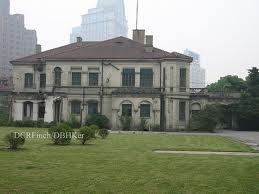
Posted: October 23rd, 2012 | No Comments »
A new book on the Boxers from David Silbey, a military historian for a change rather than a Sinologist…
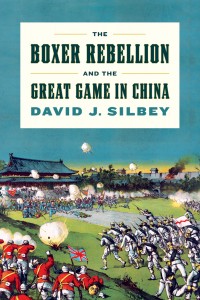
The year is 1900, and Western empires—both old and new—are locked in regional entanglements across the globe. The British are losing a bitter war against the Boers while the German kaiser is busy building a vast new navy. The United States is struggling to put down an insurgency in the South Pacific while the upstart imperialist Japan begins to make clear to neighboring Russia its territorial ambition. In China, a perennial pawn in the Great Game, a mysterious group of superstitious peasants is launching attacks on the Western powers they fear are corrupting their country. These ordinary Chinese—called Boxers by the West because of their martial arts showmanship—rise up, seemingly out of nowhere. Foreshadowing the insurgencies of the more recent past, they lack a centralized leadership and instead tap into latent nationalism and deep economic frustration to build their army. Their battle cry: “Support the Qing, exterminate the foreigners.â€
Many scholars brush off the Boxers as an ill-conceived and easily defeated revolt, but the military historian David J. Silbey shows just how close they came to beating back the combined might of all the imperial powers. Drawing on the diaries and letters of allied soldiers and diplomats, Silbey paints a vivid portrait of the short-lived war. Even though their cause ended just as quickly as it began, the bravery and patriotism of the Boxers would inspire Chinese nationalists—including a young Mao Zedong—for decades to come.
Posted: October 23rd, 2012 | No Comments »
Wonderful that both the RAS China Monograph series is launched and the RAS also now has a permanent library once again in Shanghai….
RAS CHINA MONOGRAPH SERIES – LAUNCH
&
THE OFFICIAL OPENING OF THE RAS LIBRARY
DOUBLE EVENT
4pm Saturday, 27th October 2012
RAS Library, Sino British College
1195 FuxingZhong Lu, (near Shaanxi Nan Lu) Shanghai
We are delighted to invite our members and friends to this special Double Event: the launch of the China Monograph Series, published by Hong Kong University Press, followed by Lindsay Shen, author of the second book in the series (Knowledge is Pleasure: Florence Ayscough in Shanghai), who will give a presentation on Florence Ayscough, the first NCBRAS Honorary Librarian. It is fitting that after Lindsay’s talk, we will then gather for the Official Opening of the new RAS Library.
Please join us to celebrate these two important occasions.

PROGRAMME
4:00pm          Registration
4:30pm          Lindsay Shen – Presentation
5:30pm          Reception
6:00pm          Official Opening of RAS Library
Love in the Library: Florence Ayscough and the North China Branch of the Royal Asiatic Society
Born into wealth and privilege in Concession-era Shanghai, Florence Ayscough was far from the stereotypical Shanghailander. Writer, poetry translator, art collector and gardener, Ayscough was to become a highly respected interpreter of Chinese culture to the west. While her life in Shanghai encompassed the typical landmarks of Shanghailander life such as the Country Club, the Paper Hunt, the Race Course and the Astor House Hotel, it also revolved around the North China Branch of the Royal Asiatic Society, which elected her its first woman Honorary Member.
The Society’s librarian from 1908-1923, she built the library into one of the finest on the China Coast. Her second husband fell in love with her there, between the card catalogue and the bookshelves.
Join Lindsay Shen in an exploration into the life of this talented, multi-faceted woman who impacted the way the West understood China.
Lindsay Shen is the author of Knowledge is Pleasure: Florence Ayscough in Shanghai, published by Hong Kong University Press, as one of the two first titles in the series China Monographs from the Royal Asiatic Society Shanghai.

ENTRANCE:
Members                       40 rmb       or      120 rmb to include one monograph
Non Member                  80 rmb       or      150 rmb to include one monograph
LAUNCH SPECIAL OFFER PROMOTION – ONE FREE ENTRANCE:
If you purchase Monograph Series 1 and 2 (200 rmb) at the event.
PRIORITY BOOKING for Members until 24th October 2012
MEMBERSHIP applications and renewals will be available at this event.
RSVP: to RAS Bookings at: bookings@royalasiaticsociety.org.cn
Posted: October 22nd, 2012 | No Comments »
A new book, Comparative Early Modernities: 1100-1800, from David Porter, associate professor of English and Comparative Literature at the University of Michigan, who does a lot of highly respected work on both China and Chinoiserie (sorry about the sparse description below but that’s all the publisher has felt worth sharing with us mere mortals!) –
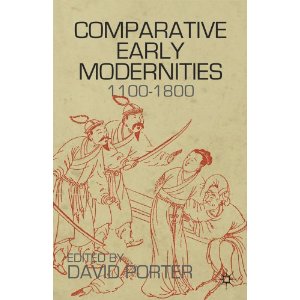
Recent historical scholarship has shown the way towards a geographically capacious conception of the early modern world. Featuring essays by nine leading scholars of early modern Asia and Europe, Comparative Early Modernities casts aside the legacies of European exceptionalism to reveal the interconnected multiplicity of the early modern world and of the variety of unexpected pathways linking these histories to the evolving modernities of the 21st century. In their fresh and provocative examinations of topics in literature, philosophy, art history, and political economy, the authors transform our understanding of global early modernity and reassess the theoretical and methodological premises of comparative historical studies.
Posted: October 22nd, 2012 | No Comments »
The United China Relief organisation that raised aid and awareness of the war in China from 1937 had a history of producing superb posters and materials in order to gain support for China’s cause against Japan’s invasion before America’s entry into the war. A large collection is held at the New York Public Library and is worth a browse. I’ve added some materials here and I’ll add more on my overspill Chinarhyming Tumblr site.


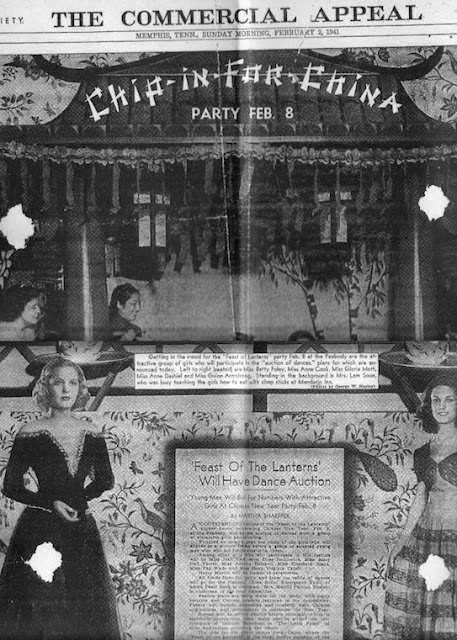
 What was left of the House of Shen Compound shortly before destruction – architectural experts at Shanghai’s Tongji University claim it would have been a straightforward (if costly obviously) process to restore the property to its former glory.
What was left of the House of Shen Compound shortly before destruction – architectural experts at Shanghai’s Tongji University claim it would have been a straightforward (if costly obviously) process to restore the property to its former glory.










